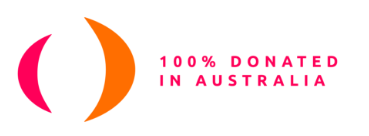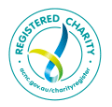Keen dancer Bianca Valenti is thankful for two anonymous bone donors whose gifts have allowed her to dance again.
The 12-year-old Thornlie girl was diagnosed with a large aneurysmal bone cyst on her right femur in March 2017, after years of suffering constant and excruciating leg pain.
Aneurysmal bone cysts are benign bone lesions that predominantly occur in children and adolescents. They can cause severe pain, swelling and bone fractures.
Bianca’s mother Tania Valenti said her daughter, who turns 13 on Saturday, had endured years of leg pain and a revolving door of doctors who had failed to identify the cause.
“We had taken her to several doctors and a naturopath, but this pain just wouldn’t go,” Mrs Valenti said. “One doctor suggested that the pain was perceived, but I knew my child was not making it up.”
By the end of the 2016 Christmas school holidays Bianca was in agony, with the pain compromising her beloved hip hop and jazz dance classes, which she attended four times a week.
Acting on maternal instinct, Mrs Valenti took Bianca to a physiotherapist who recommended an MRI scan, which revealed the cyst. She was then referred to orthopaedic surgeon Richard Carey Smith.
Further medical investigations revealed the cyst, a bubble like growth on the inside of her right femur, was causing repeated bone fractures.
Bianca underwent surgery in March 2017 to remove the cyst and transplant a donor bone graft into her femur. She was recovering well until October last year when a routine x-ray revealed another cyst just above the original site. The second cyst was removed in January and another donor bone graft transplanted into Bianca’s leg.
Now the Valenti family is sharing Bianca’s story in a bid to raise awareness about bone and tissue donation and the important work of PlusLife, WA’s only bone and tissue bank.
It comes as PlusLife prepares to open its new $10 million state-of-the-art facility in Midland on Saturday, March 24.
“Bianca loves to dance. She’s turning 13 this week and she’s full of life,” Mrs Valenti said.
“I’m so grateful for PlusLife. I hate to think of the limitations Bianca would have had to live with if bone donations were not available.
“If it wasn’t for PlusLife and the bone donations Bianca received, there’s no way she would be up and about now. It’s so wonderful this technology and medical knowhow is available to make such life-changing benefits to people’s lives.”
Mrs Valenti said she was extremely thankful for Bianca’s bone donations and called on others to consider becoming donors.
PlusLife managing director Anne Cowie said the new facilities would allow the health service to grow its bone and tissue management operations and continue its vital work supporting the community.
Since opening as the Perth Bone and Tissue Bank 25 years ago, Plus Life has provided more than 18,000 grafts to more than 10,000 patients, many of whom are children with bone cancer and spinal deformities.
“PlusLife has helped improve thousands of lives through the generous donations of Australian tissue,” Mrs Cowie said.
“This new building means we will be able to continue our important work managing bone and tissue donations in WA as we strive to meet growing demand for our services.
“We greatly appreciate the State Government’s support, which will ensure we can continue to provide a high quality service for future generations.”
PlusLife, which manages bone and tissue donations in WA, has two donor programs. Living patients having hip replacement surgery can donate the ball part of their hip, which is used commonly in a ground-up form for children with spinal deformities. And, like organ donation, bone, tendons and ligaments can be donated after death with consent from next-of-kin.
Grafts are used for patients undergoing life-changing operations, such as surgery to treat spinal deformities, complex joint surgery and treatments for patients with dental and facial bone loss. In many cases it has saved young adults the distress of a limb amputation.
Mrs Cowie said there was a need for greater community awareness about bone and tissue donation, which greatly improves outcomes for patients.
“While organ donation has a high community profile and is known as a life-saving gift, many people are not aware that tissue donation is actually possible,” Mrs Cowie said.
“The donation of tissue can have life-changing benefits for patients. One deceased tissue donor has the potential to improve the wellbeing, sight and mobility of up to 60 people.”
To register as a bone, tissue or organ donor, visit www.donorregister.gov.au or via Medicare online.



